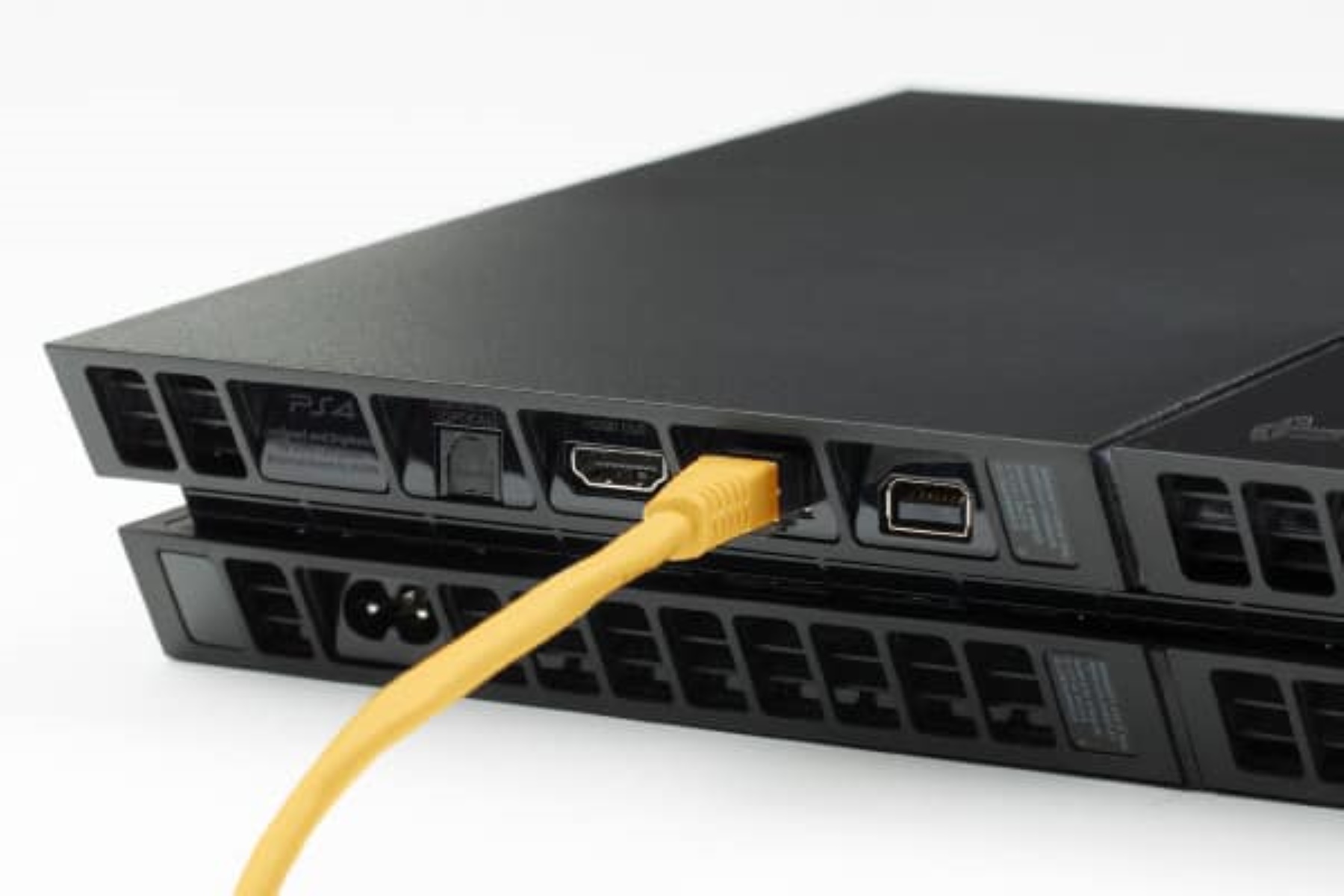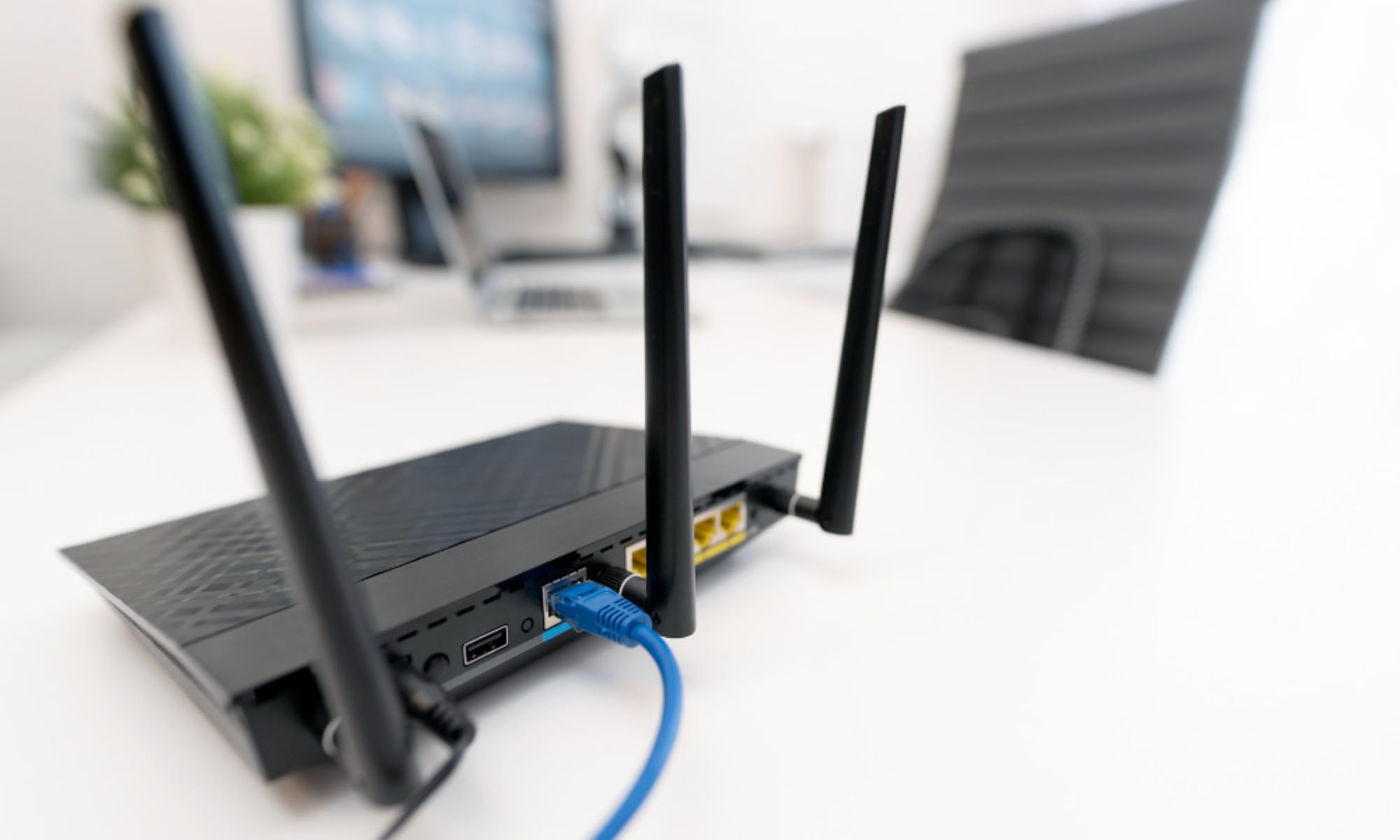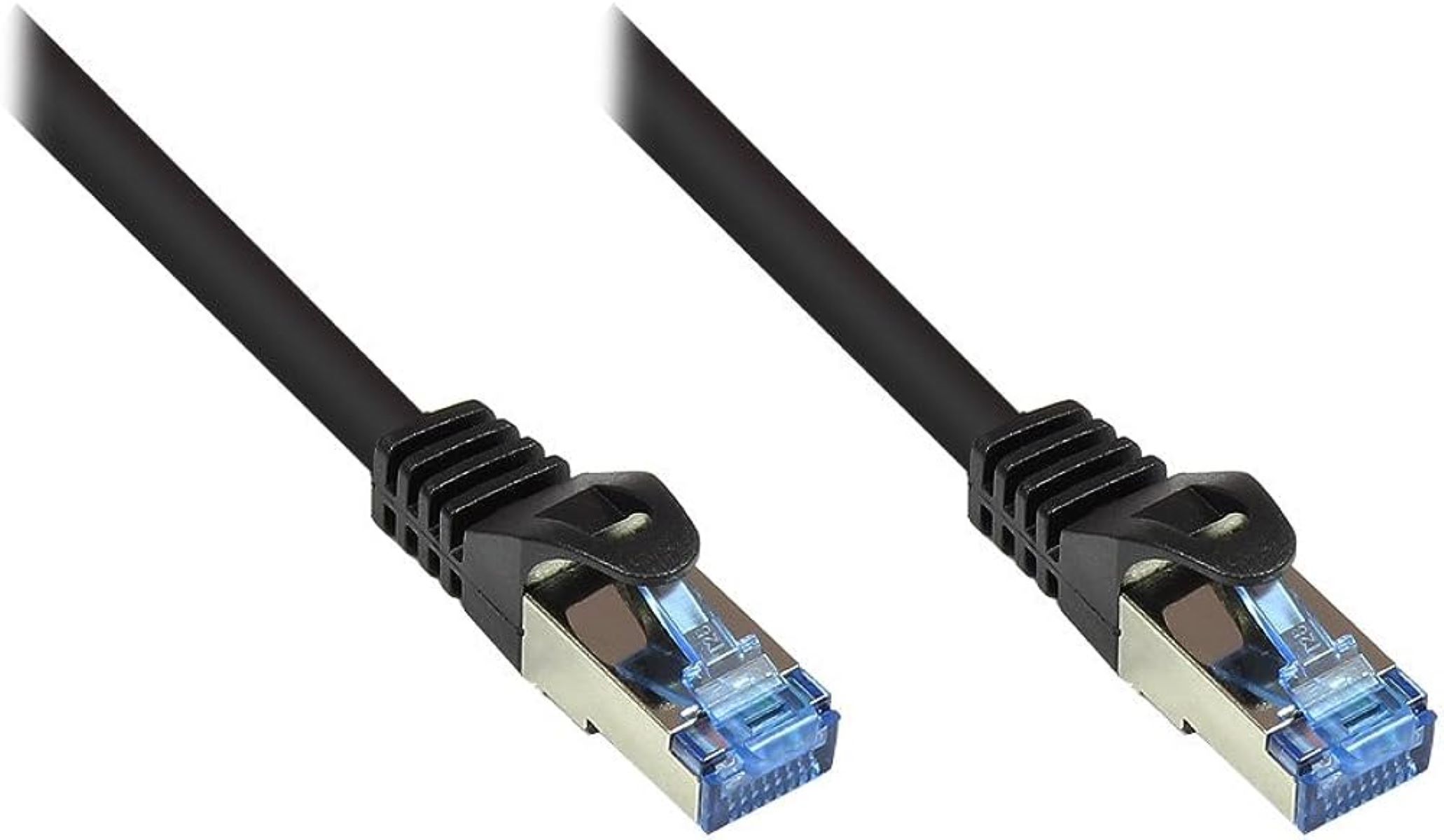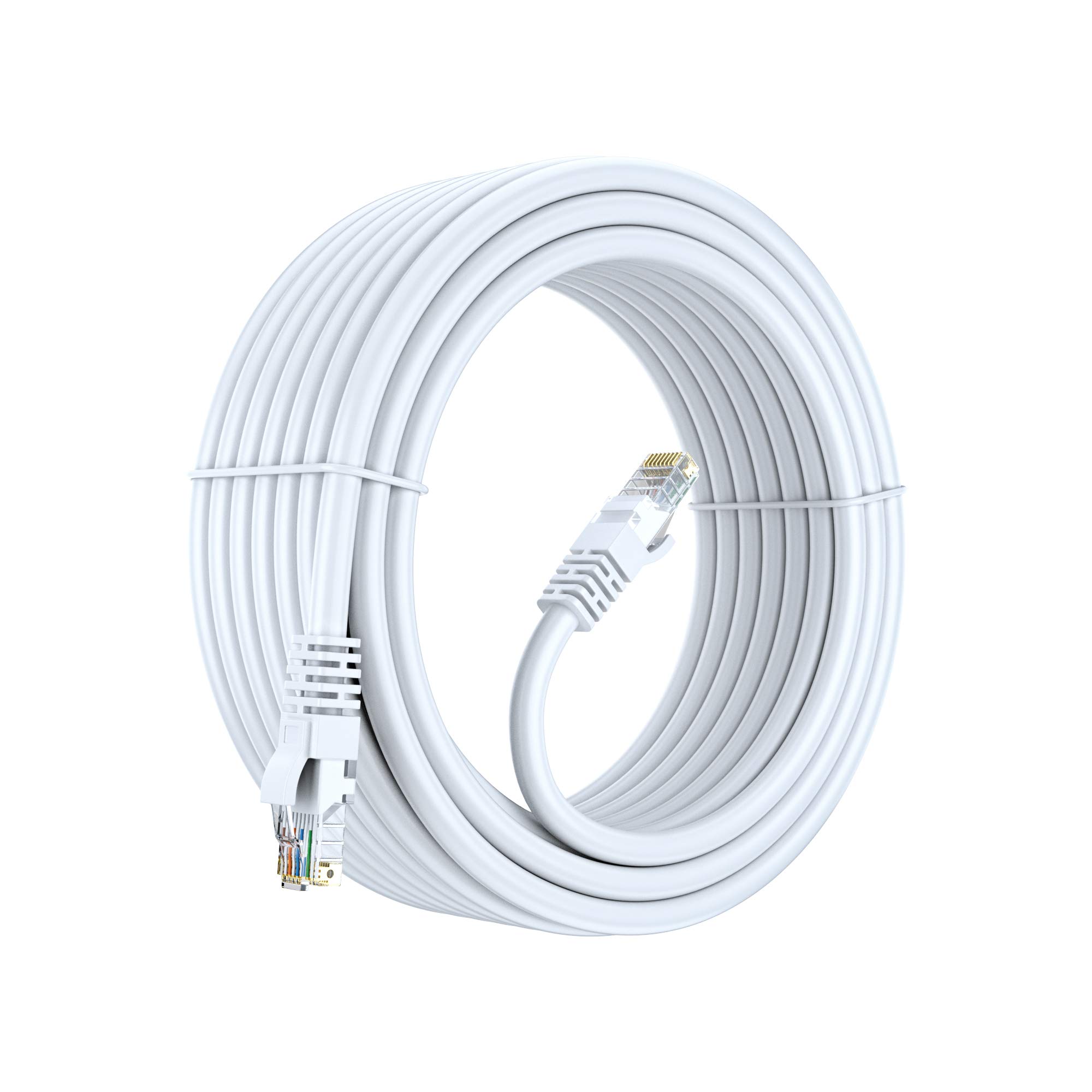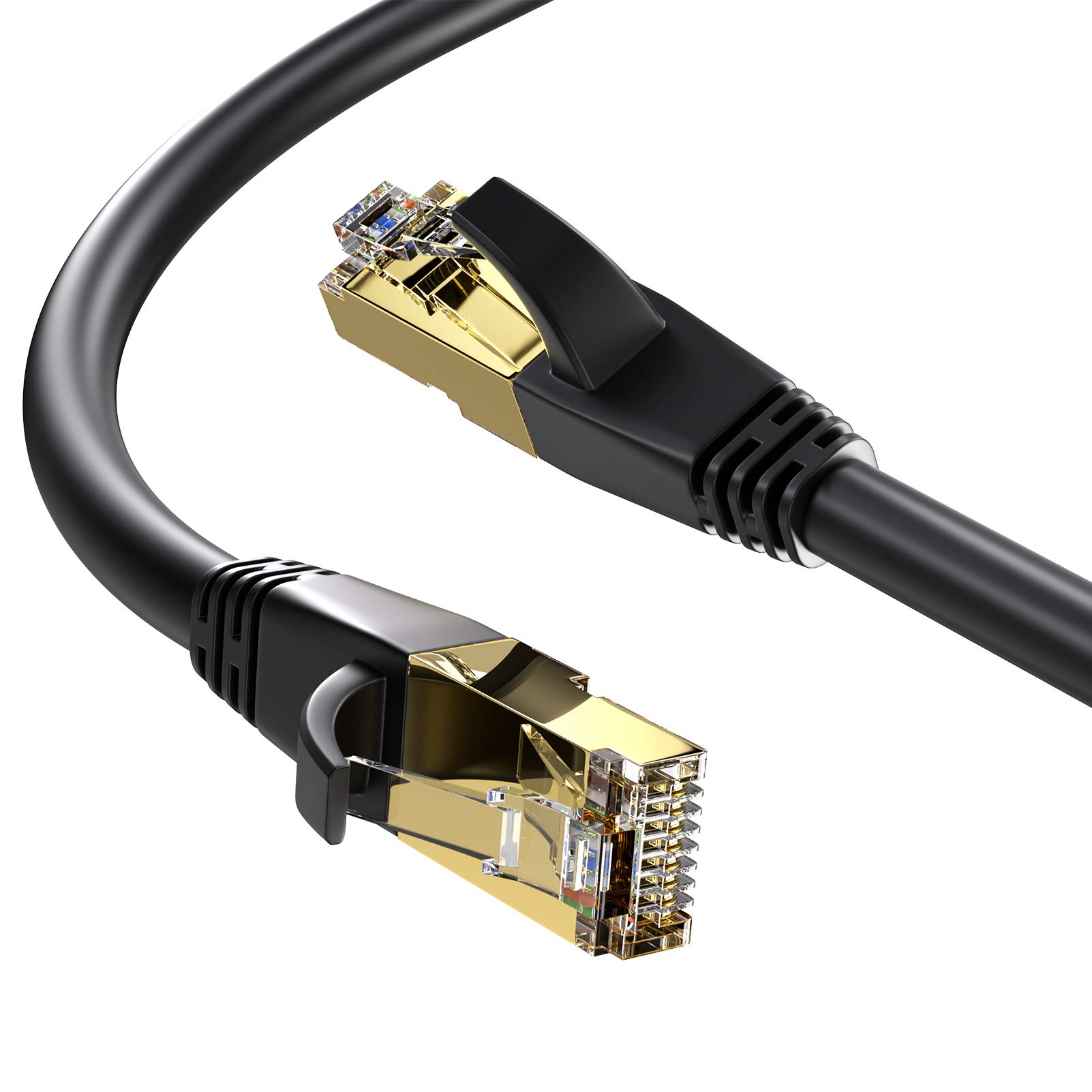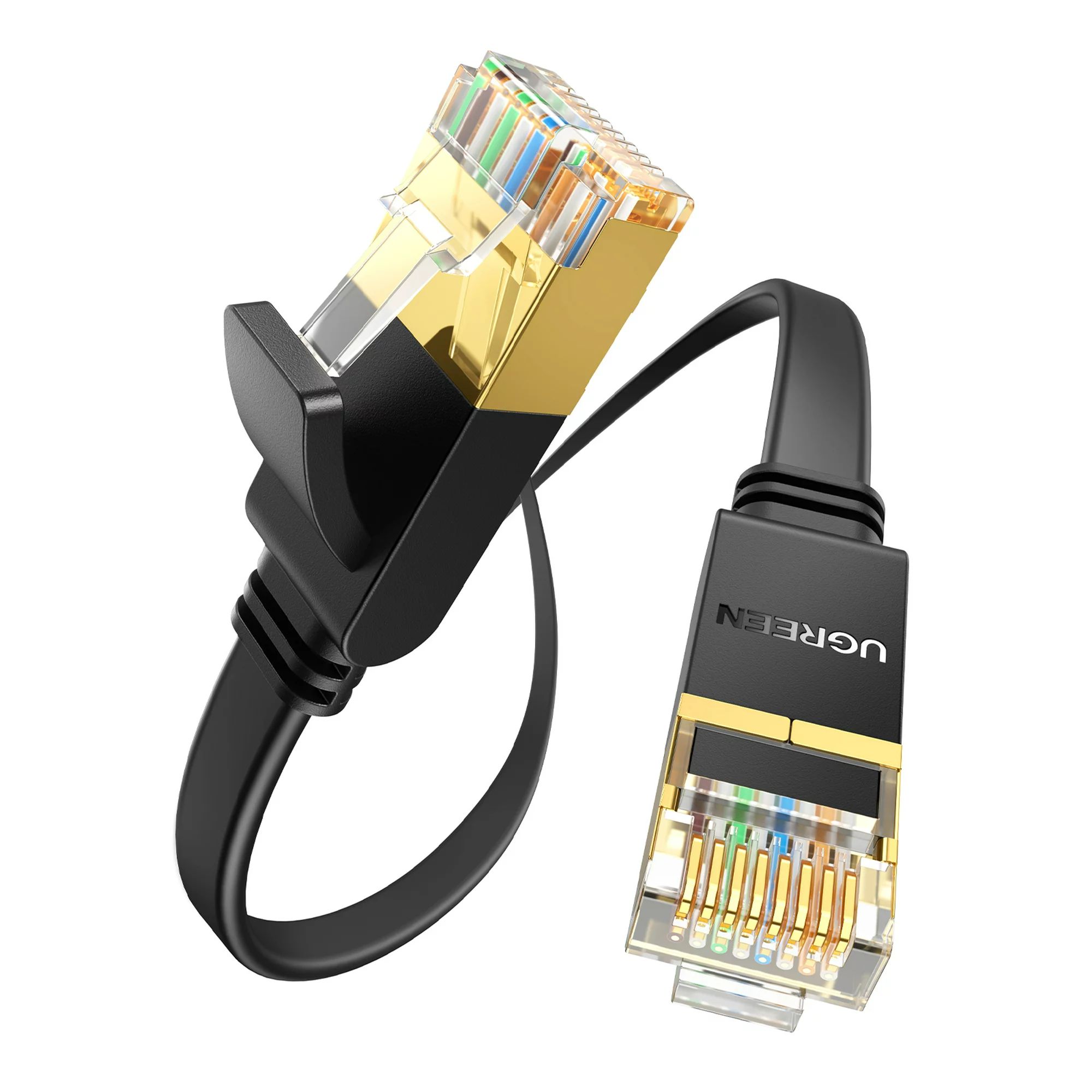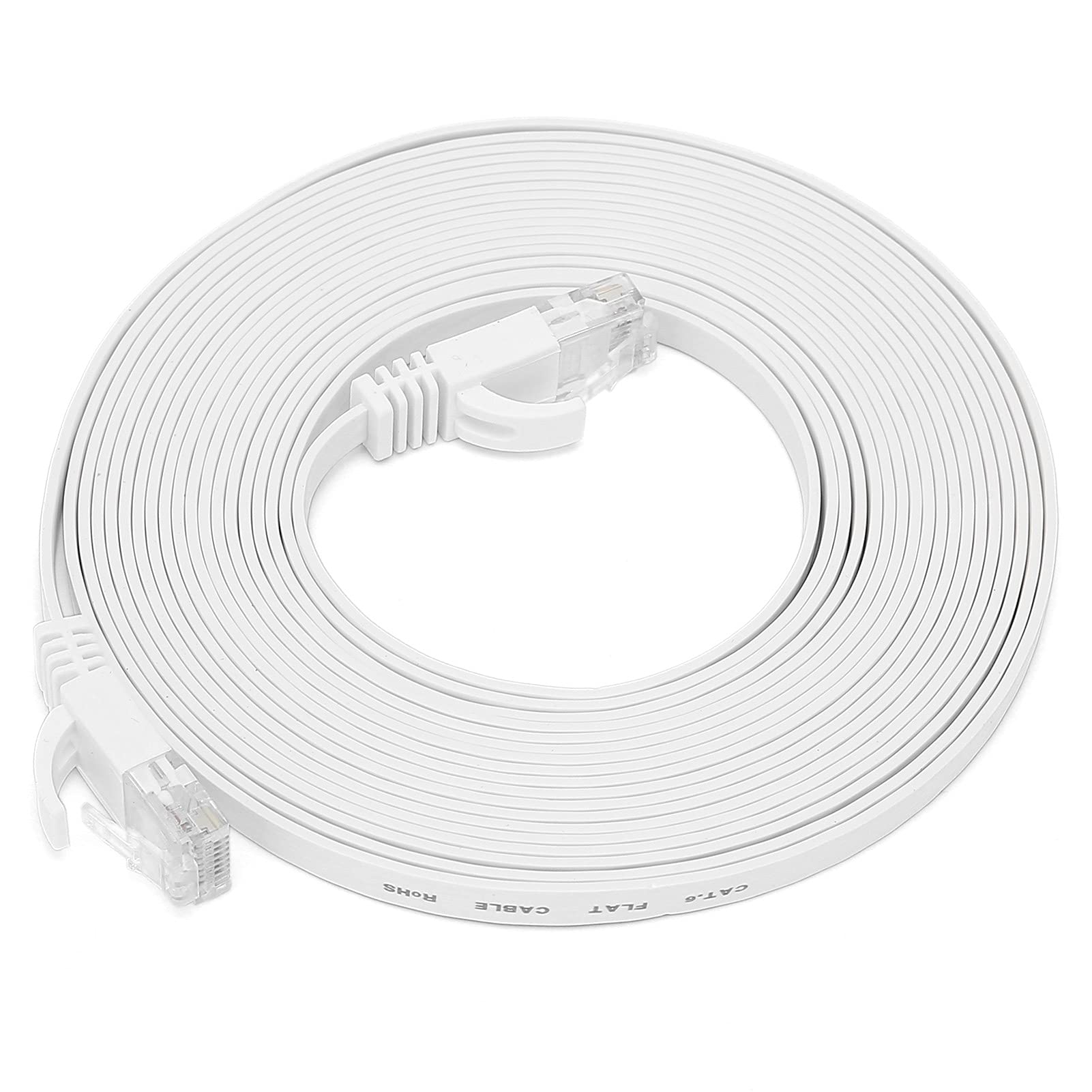Why Am I Lagging on Ethernet
While Ethernet is known for its fast and reliable connectivity, experiencing lag can be frustrating. If you find yourself facing lag issues on your Ethernet connection, there could be a number of factors at play. Understanding these potential causes can help you identify and address the problem effectively.
1. Network Congestion: One common cause of lag on Ethernet is network congestion. If multiple devices are connected to the same network or if there are heavy data usage activities such as streaming or gaming happening simultaneously, it can result in increased traffic and slower speeds.
2. Router Limitations: Another factor to consider is the limitations of your router. Older or low-quality routers may struggle to handle large amounts of data, leading to lag. Upgrading to a more advanced router or optimizing the settings on your existing one can help improve performance.
3. Cable Quality and Length: The quality and length of your Ethernet cable can also impact your connection. If you are using an old or damaged cable, it may not provide the necessary speeds. Additionally, long cable lengths can result in signal degradation, causing lag. Ensure that you are using a high-quality, properly shielded cable, and keep the cable length as short as possible.
4. Network Interference: Interference from external sources can disrupt Ethernet signals, leading to lag. Nearby electronic devices, electromagnetic interference, or even physical obstructions like walls or furniture can obstruct the signal. Minimizing the distance between your device and the router and avoiding sources of interference can help alleviate this issue.
5. Outdated Network Drivers: Outdated or faulty network drivers can negatively impact network performance. Make sure your network drivers are up to date by visiting the manufacturer’s website or using driver update software. Keeping your drivers current can resolve compatibility issues and improve overall performance.
6. Network Misconfiguration: Sometimes, misconfigurations within your network settings can lead to lag. Check your router settings, such as Quality of Service (QoS) settings, to ensure they are optimized for your internet usage. Additionally, check for any IP conflicts or incorrect network configurations that might be causing the lag.
7. Hardware Issues: In some cases, hardware issues can contribute to lag on Ethernet. Faulty network cards, damaged ports, or inadequate network adapters can all impact performance. Troubleshoot the hardware components of your network by testing different devices or seeking professional assistance if needed.
8. Troubleshooting Tips for Lag on Ethernet: If you are experiencing lag on Ethernet, here are a few troubleshooting tips to try:
- Restart your router and modem.
- Disconnect unnecessary devices from the network.
- Check for firmware updates for your router.
- Run a malware scan on your device.
- Disable any bandwidth-consuming applications or downloads.
- Reset or reconfigure your network settings if necessary.
By following these tips, you can potentially identify and resolve the causes of lag on your Ethernet connection, improving your overall internet experience. Remember, if the issue persists, it may be worth consulting with an IT professional for further assistance.
Introduction
Having a lag-free internet connection is essential for smooth browsing, online gaming, streaming, and other activities. However, if you are experiencing lag on your Ethernet connection, it can be frustrating and hinder your online experience. This article will delve into the reasons why you might be facing lag on your Ethernet connection and provide helpful tips to resolve the issue.
Ethernet is a widely used networking technology that allows devices to connect to a local area network (LAN) or the internet. It provides a reliable and high-speed connection compared to wireless alternatives like Wi-Fi. While Ethernet is often praised for its speed and stability, it is not immune to lag issues.
Understanding the potential causes of lag on Ethernet can help you troubleshoot and resolve the issue effectively. Several factors can contribute to lag on Ethernet, including network congestion, router limitations, cable quality and length, network interference, outdated network drivers, network misconfiguration, and hardware issues.
Network congestion occurs when multiple devices are accessing the network simultaneously, consuming significant bandwidth. This can lead to slower speeds and increased latency, resulting in lag. Router limitations can also impact your Ethernet connection, especially if you have an older or less powerful router. Upgrading your router or optimizing its settings can improve performance.
The quality and length of your Ethernet cable can affect your connection as well. Using old or damaged cables can result in slower speeds, while long cable lengths can cause signal degradation. Ensuring that you have high-quality, properly shielded cables and keeping cable lengths as short as possible can help mitigate these issues.
Network interference from external sources can disrupt Ethernet signals, leading to lag. Nearby electronic devices, electromagnetic interference, and physical obstructions can all interfere with the signal, reducing the connection quality. Minimizing the distance between your device and the router and avoiding sources of interference can help alleviate this problem.
Outdated or faulty network drivers can also contribute to lag on Ethernet. It is essential to keep your network drivers up to date to ensure compatibility and optimal performance. Regularly checking for driver updates from the manufacturer’s website or using driver update software can help resolve any driver-related issues.
Network misconfiguration, such as incorrect router settings or IP conflicts, can lead to lag on Ethernet. Checking and optimizing your router settings, including QoS settings, can improve performance. Additionally, ensuring that your network settings are correctly configured can help prevent any potential issues that could cause lag.
Hardware issues, including faulty network cards, damaged ports, or inadequate network adapters, can also affect Ethernet performance. Troubleshooting and testing different hardware components can help identify and resolve any hardware-related problems.
By understanding these potential causes and following the troubleshooting tips provided, you can hopefully diagnose and resolve the lag issues on your Ethernet connection. A lag-free Ethernet connection will ensure a smooth and enjoyable online experience for all your internet activities.
What is Ethernet?
Ethernet is a widely used networking technology that allows devices to connect to a local area network (LAN) or the internet. It provides a reliable and high-speed connection for transmitting data between devices. Ethernet operates on a set of standards known as the Ethernet protocol, defined by the Institute of Electrical and Electronics Engineers (IEEE).
Originally developed in the 1970s, Ethernet has evolved over the years to meet the increasing demand for faster and more efficient network connections. Today, it is the most commonly used wired networking technology in both home and business environments.
Ethernet uses twisted pair copper or fiber optic cables to transmit data packets between devices. With the advent of faster Ethernet standards, such as Gigabit Ethernet and 10 Gigabit Ethernet, data transfer rates have significantly increased, allowing for smoother and more responsive network connections.
One of the key advantages of Ethernet is its reliability. Unlike wireless connections, Ethernet connections are less prone to interference and signal degradation. This makes Ethernet ideal for applications that require a consistent and stable connection, such as online gaming, video streaming, and large file transfers.
Ethernet networks typically consist of several components, including routers, switches, and network interface cards (NICs). A router acts as a central hub for connecting devices to the network and manages the data flow between them. Switches allow multiple devices to connect to the network and facilitate efficient data transfer between them. Network interface cards, or Ethernet adapters, enable devices to connect to the Ethernet network.
When a device is connected to an Ethernet network, it is assigned a unique identifier called a Media Access Control (MAC) address. This address ensures that data packets are delivered to the intended recipient within the network.
Overall, Ethernet provides a fast, reliable, and secure means of connecting devices to a network. Its widespread adoption and compatibility with various devices and operating systems make it an essential technology for both personal and professional use.
Common Causes of Lag on Ethernet
Experiencing lag on an Ethernet connection can be frustrating, especially when you expect a fast and reliable connection. Several factors can contribute to lag on Ethernet, and understanding these common causes can help troubleshoot and address the issue effectively.
Network Congestion: One of the primary causes of lag on Ethernet is network congestion. When multiple devices are connected to the same network and consuming a significant amount of bandwidth, it can result in slower speeds and increased latency. This is especially noticeable during peak hours when many users are actively using the network for bandwidth-intensive activities like video streaming, gaming, or downloading large files.
Router Limitations: The limitations of your router can also contribute to lag on Ethernet. Older or low-quality routers may struggle to handle large amounts of data and network traffic. Insufficient processing power, limited memory, or outdated firmware can all impact network performance, leading to lag. In such cases, upgrading to a more advanced router or optimizing the settings on your existing router can help improve performance.
Cable Quality and Length: Another factor to consider is the quality and length of your Ethernet cables. Using old, damaged, or low-quality cables can result in slower speeds and data loss, leading to lag. Additionally, excessively long cable lengths can cause signal degradation, resulting in reduced connection quality. It is advisable to use high-quality, properly shielded Ethernet cables and keep the cable length as short as possible to minimize signal loss and maximize performance.
Network Interference: Network interference can also contribute to lag on Ethernet connections. Environmental factors, such as nearby electronic devices, electrical wires, or even physical obstructions like walls or furniture, can interfere with the Ethernet signal, leading to degraded performance. Minimizing the distance between your device and the router, avoiding sources of interference, and ensuring a clear line of sight can help reduce the impact of network interference.
Outdated Network Drivers: Outdated or faulty network drivers on your devices can negatively impact network performance, including Ethernet connectivity. It is important to keep your network drivers up to date to resolve compatibility issues and improve overall performance. Check the manufacturer’s website or use driver update software to ensure you have the latest network drivers installed.
Network Misconfiguration: Misconfigurations within your network settings can often cause lag on Ethernet connections. Incorrect router settings, such as Quality of Service (QoS) settings that prioritize certain types of network traffic over others, can result in uneven network performance. Additionally, IP conflicts or incorrect network configurations can also contribute to lag. Ensure that your router settings are optimized for your internet usage and fix any misconfigurations that may be impacting your connection.
Hardware Issues: Hardware issues, such as faulty network cards, damaged ports, or inadequate network adapters, can also cause lag on Ethernet. If you suspect hardware issues, you can try troubleshooting by testing different devices or seeking professional assistance if needed. Replacing or repairing the faulty hardware component can help resolve the lag issues.
By identifying these common causes of lag on Ethernet, you can take appropriate steps to troubleshoot and resolve the issue. Understanding the factors that affect Ethernet performance will enable you to optimize your network setup and enjoy a smooth and responsive Ethernet connection.
Network Congestion
Network congestion is a common cause of lag on Ethernet connections. It occurs when multiple devices connected to the same network are demanding significant amounts of bandwidth simultaneously. This increased traffic can overwhelm the network infrastructure, resulting in slower speeds, increased latency, and overall degraded performance.
During peak hours, when many users are actively utilizing the network for data-intensive activities such as streaming high-definition videos, online gaming, or downloading large files, network congestion becomes more noticeable. The data packets sent and received by devices have to compete for limited network resources, leading to delays and an overall sluggish connection.
Network congestion can impact various aspects of your internet experience. Streaming videos may encounter buffering or frequent pauses, online gaming can introduce significant input lag, and downloading large files can take much longer than anticipated. Even general web browsing may feel sluggish due to the increased latency caused by network congestion.
There are several steps you can take to alleviate network congestion and minimize lag on your Ethernet connection:
- 1. Quality of Service (QoS) Settings: Check if your router supports QoS settings. QoS allows you to prioritize certain types of network traffic over others. By allocating higher priority to critical applications, such as video conferencing or online gaming, you can ensure a smoother user experience for those applications, even during periods of congestion.
- 2. Bandwidth Management: Allocate bandwidth to devices and applications based on their importance or priority. This can be done through the router’s configuration settings, ensuring that critical devices or applications receive enough bandwidth to operate without significant lag.
- 3. Bandwidth-Throttling Applications: Identify and limit bandwidth-consuming applications that are running in the background. Applications like file-sharing programs or software that automatically updates can negatively impact your network performance. By restricting their bandwidth usage, you can free up network resources for other important activities.
- 4. Network Monitoring: Monitor your network traffic to identify the devices or applications that are using excessive bandwidth. Many routers offer built-in monitoring tools or can be complemented with third-party network monitoring software. This knowledge can help you better understand your network’s usage patterns and make informed decisions to optimize your bandwidth allocation.
- 5. Wired Connection: If possible, consider connecting your most bandwidth-intensive devices, such as gaming consoles or streaming devices, directly to the router using Ethernet cables. Wired connections generally offer more stable and reliable speeds than wireless connections, reducing the chances of experiencing lag due to network congestion.
- 6. Time-Based Usage: Schedule bandwidth-intensive activities during non-peak hours to minimize the impact of network congestion. By avoiding periods when the network is heavily utilized, you can ensure a smoother and faster experience for your important online tasks.
By implementing these strategies, you can alleviate network congestion and optimize your Ethernet connection, reducing lag and enjoying a smoother and more responsive internet experience.
Router Limitations
Router limitations can contribute to lag on Ethernet connections, impacting the overall performance and speed of your network. Understanding these limitations and taking steps to address them can significantly improve your Ethernet connection.
One of the common limitations of routers is their processing power and memory. Older or low-end routers may not have the necessary hardware capabilities to handle the increasing demands of today’s data-intensive applications. When multiple devices are connected to the router and demanding bandwidth simultaneously, the router may struggle to process and route the data efficiently, resulting in lag.
Additionally, outdated firmware can also impact router performance. Firmware is the software that controls the router’s operation and functionality. Outdated firmware can contain bugs or compatibility issues that affect network performance. Ensuring that your router has the latest firmware update can address such issues and improve overall performance.
Here are some steps you can take to address router limitations:
- 1. Upgrade Your Router: If you have an older or low-end router, consider upgrading to a more advanced model that is better equipped to handle the demands of modern networks. A newer router with faster processing speeds and ample memory can significantly improve network performance and reduce lag.
- 2. Optimize Router Settings: Access your router’s configuration interface and optimize the settings for better performance. You can prioritize specific applications or devices, set up quality of service (QoS) rules, or adjust channel settings to minimize interference and enhance speed.
- 3. Update Router Firmware: Check the manufacturer’s website or the router’s admin interface for any firmware updates. Upgrading to the latest firmware version can fix bugs, improve compatibility, and enhance the overall capabilities of your router.
- 4. Position Your Router Wisely: The placement of your router can significantly impact network performance. Ensure it is located in a central area, away from obstruction and interference-causing devices like cordless phones or microwaves.
- 5. Limit Connected Devices: Excessive device connections can strain the router, leading to performance degradation. Disconnect or manage the number of devices connected to the network to alleviate the strain on your router’s resources.
Lastly, it’s important to note that even the most high-end routers have limitations. If you have a large number of devices connected to the network and require fast and reliable performance, consider investing in enterprise-grade networking solutions or consulting with a professional to ensure your network infrastructure can handle the demands placed on it.
By addressing router limitations through upgrading hardware, optimizing settings, updating firmware, and considering the number of connected devices, you can significantly improve your Ethernet connection’s performance, leading to a faster and more stable network experience.
Cable Quality and Length
The quality and length of your Ethernet cables play a crucial role in the performance of your network connection. Using the right cables can help minimize lag and ensure a stable and reliable Ethernet connection.
Cable Quality: The quality of Ethernet cables can vary significantly. Low-quality or poorly shielded cables may introduce interference and signal degradation, leading to increased latency and reduced data transfer speeds. It is important to invest in high-quality Ethernet cables that are properly shielded to minimize signal loss and maintain a stable connection. Category 5e (Cat5e) and Category 6 (Cat6) cables are commonly recommended for most home and small business networks, as they provide good performance and support higher data transfer rates.
Cable Length: The length of your Ethernet cables can also impact network performance. Long cable lengths can introduce signal degradation, resulting in lower data transmission speeds and increased latency. As a general rule, it is recommended to keep Ethernet cable lengths as short as possible. The maximum recommended length for Cat5e and Cat6 cables is 100 meters (about 328 feet). If you require long cable runs, consider using signal boosters or network switches to maintain signal strength and minimize signal loss.
When choosing Ethernet cables, pay attention to the specifications and make sure they meet the required standards. Look for cables with proper shielding, twisted pair construction, and gold-plated connectors for optimal performance and reliability. Ensuring you have the correct cable for your network requirements can make a significant difference in reducing lag and improving overall network performance.
It’s also important to regularly inspect and maintain your Ethernet cables. Cables can become damaged over time, resulting in connectivity issues and performance degradation. Check for any signs of wear or damage, such as frayed cables or bent connectors, and replace them if necessary to maintain optimal performance.
In some cases, utilizing additional network equipment can help maintain cable quality and length. For longer cable runs, using network switches or fiber optic converters can help extend the reach of your Ethernet connection without sacrificing performance. These devices can help regenerate the signal and minimize signal loss over longer distances.
By using high-quality Ethernet cables, keeping cable lengths as short as possible, and regularly maintaining your cables, you can optimize your network connection and minimize lag. A strong and reliable Ethernet connection will ensure fast and consistent data transfer speeds, providing a smooth and seamless online experience.
Network Interference
Network interference can significantly impact the performance of your Ethernet connection, leading to lag and a degraded network experience. Several factors can cause interference, affecting the strength and quality of the Ethernet signal.
Nearby Electronic Devices: Other electronic devices near your router and Ethernet-connected devices can generate electromagnetic interference (EMI) that disrupts the Ethernet signal. Devices such as cordless phones, microwave ovens, or Bluetooth devices can emit signals that interfere with the Ethernet signal. Keeping these devices away from your router and Ethernet cables can help minimize interference and improve network performance.
Physical Obstructions: Physical obstructions, such as walls, floors, and furniture, can reduce the strength of the Ethernet signal. The signal may have to pass through multiple obstacles before reaching your device, which can result in signal loss and increased latency. To minimize interference caused by physical obstructions, position your router as centrally as possible within your home or office for better coverage. Considering the signal range and strength of your router can also help mitigate the impact of physical obstacles.
Electric Cables: Electrical cables, such as power cords or electrical wiring, can introduce interference if they are in close proximity to Ethernet cables. The electromagnetic fields generated by these electrical cables can interfere with the Ethernet signal. To minimize this interference, it is advisable to keep Ethernet cables separated from electrical cables. Running Ethernet cables perpendicular to electrical cables can help reduce the risk of interference.
Signal Reflection: When Ethernet signals encounter reflective surfaces, such as mirrors or metallic objects, they can bounce off and interfere with themselves. This can result in signal degradation and increased latency. Positioning your router away from reflective surfaces and using devices with proper shielding can help minimize signal reflection.
Wireless Interference: If you have a combination modem/router or are using wireless devices in close proximity to your Ethernet-connected devices, wireless interference can occur. This interference can disrupt the Ethernet signal and result in lag. Trying to reduce wireless interference by changing the wireless channel or adjusting the positioning of your wireless devices can help minimize its impact.
Line of Sight: In some cases, having a clear line of sight between your router and Ethernet-connected devices can improve signal quality and reduce interference. This is particularly important if there are obstacles, such as walls or large objects, obstructing the direct path between the router and devices. Minimizing the distance and obstacles between your devices and the router can help maintain a strong and stable Ethernet connection.
By minimizing network interference, you can improve the performance and reliability of your Ethernet connection. Positioning your router strategically, keeping it away from sources of interference, separating Ethernet cables from electrical cables, and optimizing wireless devices can go a long way in reducing interference and ensuring a smoother network experience.
Outdated Network Drivers
Outdated network drivers can have a significant impact on the performance of your Ethernet connection. Network drivers are essential software components that enable communication between your operating system and the network hardware. When these drivers are out of date or faulty, it can result in various issues, including lag on your Ethernet connection.
Compatibility: Outdated network drivers may not be compatible with the latest operating system updates or network protocols. This lack of compatibility can lead to connectivity issues, reduced performance, and increased latency. It is important to keep your network drivers up to date to ensure optimal compatibility with your operating system and network hardware.
Bug Fixes and Enhancements: Network driver updates often include bug fixes and performance enhancements. These updates address known issues, improve stability, and optimize network performance. By using outdated network drivers, you might be missing out on these crucial updates that can help resolve lag and other network-related problems.
Security: Outdated network drivers can pose security risks. Vulnerabilities in outdated drivers can be exploited by malicious actors to gain unauthorized access to your network or compromise the security of your data. Keeping your network drivers up to date with the latest security patches is essential for maintaining a secure and protected network environment.
To update your network drivers, you have a few options:
- Manufacturer’s Website: Visit the website of your network hardware manufacturer and search for driver updates specific to your model. Download and install the latest drivers available for your operating system.
- Device Manager: On Windows, you can use the Device Manager to update your network drivers. Right-click on the network adapter in the Device Manager, select “Update driver,” and choose the option to search automatically for updated drivers.
- Driver Update Software: You can also use driver update software that scans your system and automatically detects outdated drivers. These tools can simplify the process of keeping your network drivers up to date.
Regularly updating your network drivers is essential for ensuring optimal performance and stability of your Ethernet connection. By addressing any compatibility issues, benefiting from bug fixes and enhancements, and maintaining the security of your network, you can minimize lag and enjoy a smoother and more responsive network experience.
Network Misconfiguration
Network misconfiguration can be a common cause of lag on Ethernet connections. Incorrect settings or conflicts within your network configuration can lead to performance issues and hinder the smooth operation of your network. Identifying and rectifying these misconfigurations can help resolve lag and improve overall network performance.
Router Settings: Router settings play a crucial role in determining network performance. Incorrect configuration of settings such as Quality of Service (QoS), port forwarding, or DHCP (Dynamic Host Configuration Protocol) can result in unequal distribution of bandwidth or incorrect routing of network traffic. Check your router’s settings to ensure they are optimized for your internet usage and avoid conflicting configurations that may compromise network performance.
IP Address Conflicts: IP address conflicts occur when multiple devices on the network are assigned the same IP address. This can happen when devices are manually assigned IP addresses or when the DHCP server fails to properly assign unique IPs. IP conflicts can cause connectivity issues and result in lag. By ensuring that each device has a unique IP address within the network, you can address this misconfiguration and improve network performance.
DNS Configuration: Incorrect Domain Name System (DNS) configuration can also contribute to lag on Ethernet connections. DNS is responsible for resolving domain names into IP addresses, allowing devices to connect to websites and services on the internet. If your DNS settings are misconfigured or point to unreliable DNS servers, it can result in delayed or failed connections, leading to lag. Use reliable and fast DNS servers, such as those provided by your internet service provider or reputable public DNS providers, to prevent DNS-related lag.
Firewall and Security Settings: Overly restrictive firewall settings or incorrect security configurations can also affect network performance. Improperly configured firewalls may block essential network traffic, causing delays and disruptions. Ensure that your firewall settings strike a balance between security and network performance, allowing necessary traffic to pass through without unnecessary restrictions.
Resolving network misconfigurations requires careful examination and adjustment of settings. Here are a few steps you can take to address network misconfigurations:
- Review Router Settings: Go through the configuration settings of your router to ensure they are optimized for your internet usage. Pay close attention to settings related to QoS, port forwarding, and DHCP to avoid any conflicting configurations.
- Check for IP Address Conflicts: Use your router’s management interface or network scanning tools to identify any IP address conflicts. Manually assign unique IP addresses to devices or configure your router’s DHCP server to allocate addresses without conflicts.
- Verify DNS Configuration: Check your device’s DNS settings to ensure they are correctly configured. Consider using reliable and fast DNS servers to minimize delays in resolving domain names.
- Review Firewall Settings: Examine your firewall settings and ensure they strike the right balance between security and network performance. Adjust any overly restrictive settings that may be affecting network connectivity.
By correcting network misconfigurations, you can optimize your Ethernet connection, reduce lag, and improve overall network performance. Regularly review and update your network settings to ensure that they align with your network requirements.
Hardware Issues
Hardware issues can have a significant impact on Ethernet performance and can be a common cause of lag. Faulty or inadequate hardware components can result in connectivity problems, slow data transfer speeds, and increased latency. Identifying and troubleshooting hardware issues can help resolve lag on your Ethernet connection.
Network Cards: Faulty network cards, also known as network interface cards (NICs), can cause lag and connectivity issues. Network cards are responsible for sending and receiving data over the Ethernet connection. If a network card is faulty or incompatible with your system, it may result in intermittent connection dropouts or slow data transfer speeds. In such cases, replacing the faulty network card with a new one can help resolve the hardware-related lag issues.
Router and Switches: Routers and switches are crucial components of your network infrastructure. If these devices are not functioning correctly, they can cause lag on your Ethernet connection. Common issues with routers and switches include outdated firmware, hardware malfunctions, or improperly configured settings. Regularly checking for firmware updates, ensuring proper configuration, and troubleshooting hardware-related problems can help resolve lag caused by these devices.
Network Adapters and Cables: Inadequate network adapters or damaged Ethernet cables can also contribute to lag on Ethernet connections. Network adapters convert digital signals into analog ones for transmission over the Ethernet cables. If the network adapter is inadequate or incompatible with your system, it may result in poor network performance. Damaged Ethernet cables, including frayed or bent connectors, can cause signal loss and connectivity issues. Replacing the network adapter or cable with a high-quality, compatible one can help resolve these hardware-related lag issues.
Power Supply: The power supply unit (PSU) of your router or other network devices can sometimes be the cause of lag. Insufficient power supply may lead to unstable network performance, intermittent connection dropouts, or unexpected router restarts. Ensure that your network devices are receiving adequate power and consider using a UPS (Uninterruptible Power Supply) for added stability and protection against power fluctuations.
Overheating: Overheating of network devices can impact performance and lead to lag. If routers, switches, or network cards are not properly ventilated or are subjected to extreme temperatures, they may overheat and cause reduced performance or intermittent connectivity issues. Ensure that network devices are placed in well-ventilated areas and consider using cooling solutions, such as fans or heat sinks, to dissipate excess heat.
If you suspect hardware issues are causing lag on your Ethernet connection, here are some troubleshooting steps to consider:
- Test with Different Devices: Use different devices to connect to your Ethernet connection and see if the lag persists. If the problem is specific to a particular device, it may indicate a hardware issue with that device.
- Replace Faulty Hardware: If you pinpoint a specific hardware component causing the lag, consider replacing it with a new one. This could include network cards, switches, or even the router itself.
- Check Connections: Ensure that all cables are securely connected to the appropriate ports on the devices and that there are no loose connections or damaged cables.
- Seek Professional Assistance: If you are unsure about identifying or resolving hardware issues, it may be helpful to consult with a professional IT technician who can diagnose and address the problem accurately.
By troubleshooting and addressing hardware-related issues, you can improve the performance and stability of your Ethernet connection, minimizing lag and creating a smoother and more reliable network experience.
Troubleshooting Tips for Lag on Ethernet
Experiencing lag on your Ethernet connection can be frustrating, but there are several troubleshooting tips you can try to improve performance and reduce latency. By following these tips, you can potentially identify and resolve the causes of lag on your Ethernet connection:
- Restart Your Router and Modem: Sometimes, simply restarting your router and modem can resolve temporary network issues and improve performance. Turn off both devices, wait for a few moments, and then power them back on.
- Disconnect Unnecessary Devices: If multiple devices are connected to your network, disconnect any devices that are not actively in use. This can help reduce network congestion and improve bandwidth availability for your active devices.
- Check for Firmware Updates: Regularly check for firmware updates for your router. Manufacturers often release firmware updates to address bugs, improve performance, and introduce new features. Visit the manufacturer’s website for firmware updates and follow their instructions for installation.
- Run a Malware Scan: Malware or viruses on your devices can consume resources and slow down network performance. Run a thorough malware scan using reputable antivirus software to detect and remove any malicious programs that may be affecting your network.
- Disable Bandwidth-Consuming Applications: Certain applications or downloads can consume significant bandwidth, causing lag on your Ethernet connection. Temporarily disable or limit bandwidth usage for applications like file-sharing programs or video streaming services to free up network resources.
- Reset or Reconfigure Your Network Settings: If you suspect misconfiguration in your network settings, try resetting your router to factory default settings and reconfiguring it from scratch. This can help eliminate any incorrect settings that may be causing lag.
- Check Ethernet Cable Connections: Ensure that all Ethernet cable connections are secure and properly plugged into their respective ports. Loose or damaged cable connections can result in intermittent or slow network performance.
- Disable IPv6: In some cases, disabling IPv6 on your router and devices can help improve network performance. Follow the instructions provided by your router manufacturer to disable IPv6 if necessary.
- Consider Using a Different DNS: DNS resolution can sometimes be a cause of lag. Try using alternative DNS servers, such as Google Public DNS or OpenDNS, to see if it improves your network performance.
- Monitor Network Traffic: Use network monitoring software to identify any processes or devices that are consuming excessive bandwidth. This information can help pinpoint the source of the lag and allow you to take appropriate action.
It is important to note that not all troubleshooting tips may be applicable to your specific situation. Every network environment is unique, and the effectiveness of these tips may vary. If the lag on your Ethernet connection persists, it may be helpful to seek professional assistance from an IT technician who can provide deeper insights and guidance tailored to your specific network setup.
By implementing these troubleshooting tips, you can potentially identify and resolve the causes of lag on your Ethernet connection, leading to improved network performance and a smoother online experience.
Conclusion
Experiencing lag on your Ethernet connection can be frustrating, but it’s important to remember that there are various factors that can contribute to this issue. By understanding the common causes of lag and implementing the troubleshooting tips provided in this article, you can work towards improving the performance and stability of your Ethernet connection.
From network congestion and router limitations to cable quality and length, network interference, outdated network drivers, network misconfiguration, and hardware issues, each factor plays a significant role in the overall performance of your Ethernet connection. By identifying and addressing these factors, you can minimize lag and enjoy a faster and more responsive network experience.
Remember to regularly update your network drivers, optimize your router settings, and ensure that your cables are of high quality and properly connected. Additionally, minimizing network interference, troubleshooting hardware issues, and checking for misconfigurations in your network settings will help resolve lag on your Ethernet connection.
If you have tried all the troubleshooting tips and are still experiencing lag, it may be beneficial to consult with an IT professional who can provide further assistance. They can assess your network setup, diagnose any underlying issues, and implement advanced solutions to optimize your Ethernet connection.
With a stable and efficient Ethernet connection, you can enjoy a smoother online experience, whether you’re streaming high-definition videos, playing online games, or engaging in productivity tasks that require fast and reliable internet access.
Remember that troubleshooting and resolving lag on Ethernet connections can be a gradual process. It may require a combination of steps, adjustments, and continuous monitoring to achieve the desired performance levels. With persistence and the right approach, you can overcome lag and enjoy the full benefits of a high-performance Ethernet connection.









